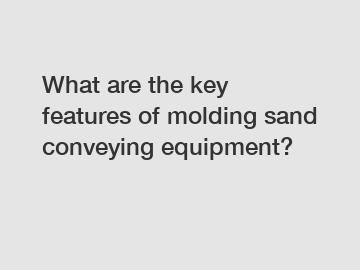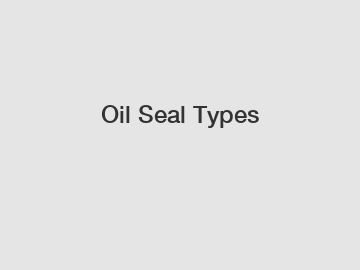General Understanding of Roller Conveyors
Various types of industries use roller conveyors to simplify the production process. Roller Conveyor is one type of conveyor that is commonly used in industry apart from Belt Conveyors. The roller conveyor used usually has a variety of types and dimensions that are adjusted to the needs of each production line.
You can find more information on our web, so please take a look.
General knowledge about roller conveyors is an industrial machine whose function is to move goods from one place to another using parallel rollers. To find out more about the types of Roller Conveyors, and to find out which type of Roller Conveyor will suit your needs, you can read this article.
Why Should You Use Roller Conveyors?
- Using roller conveyors increases industrial productivity in packaging lines to become more efficient and effective.
- Roller conveyors can save costs and reduce the processing time for the distribution of goods.
- Power roller conveyor replaces human work that is done manually continuously to become automatic in a short time.
Standard Rules of Connect Automation for Roller Conveyor Use
- Goods transferred must have a length touching 4 rollers, to prevent it from getting stuck on the conveyor rollers.
- Placement of goods onto the roller conveyor is not slammed.
- The total weight of goods on the roller conveyor that is transferred is a maximum of 50 kg.
- To maintain the durability of the roller conveyor, it is necessary to pay attention to the input of goods manually. If goods are dropped onto the conveyor, the roller will receive an "impact" that is heavier than the load and tends to be damaged quickly.
- Minimum gravity roller angle of 5°.
- On a gravity roller, every mm in length the height decreases by 100mm.
- If the roller length exceeds mm, it is recommended to use a motor (power roller conveyor).
Most Suitable Roller Conveyor Applications for:
- Warehousing
- Packaging line
- Logistics
- Distribution or storage lines
- Liaison between conveyor belts
Types of Conveyor Rollers
There are various types of conveyors used by the industry. One of them is roller conveyor. Roller conveyor itself also has different types according to the needs of each production line.
Types of Conveyor Rollers Based on their Body Structure are divided into 4, namely:
-
Gravity Roller Conveyor
Understanding of Gravity Roller Conveyor is one type of roller conveyor that is often used. Gravity Roller Conveyor facilitates the process of transferring goods without having to use additional driving force, both motors and humans.
Gravity Roller Conveyors are generally used on packaging production lines or product transfers that are already in cardboard packaging. Roller Gravity Conveyors can also be used to transfer products from different elevations, such as between conveyor belts and during product loading-unloading processes to modes of transportation.
General dimensions of Gravity Roller Conveyor:
Width
: 300 - 600mm
Length
: Maximum of mm
Height
: 350 - 800mm
-
Flat Roller Conveyor
Flat Roller Conveyor is commonly used for product packaging and labeling production lines, it can also be used as a bridge between different production lines. Flat Roller Conveyor can be applied using a motor and without a motor as a drive.
Flat rollers without motor drives are the choice of several industries because the speed of each process that occurs on the conveyor is different in duration. The different speed is because it is done manually by humans, not machines. Meanwhile, Flat Roller Conveyors that use a motor drive system are used for transfers between production lines without a lot of manual processes that occur on the conveyor. If the product being transferred has a large mass, using a motor drive will simplify the transfer process.
Industries that use Flat Roller Conveyors generally have quite large product dimensions and weights, for example the electronics industry, the ceramic or marble stone industry, the furniture industry, the logistics industry, and various other industries.
General dimensions of Flat Roller Conveyor:
Featured content:
Top 5 questions to ask about carton sealing machines
Hauling Frack Sand in a Hopper Bottom
B&S Symphonie Buyer's Guide - Brass and Pipes
The Benefits of Using Brandt VSM300 Scalping Steel Screen manufacturer
Why is custom oxford cloth christmas tree storage bag Better?
What is the PVC Maximum Temperature Limit?
Is Your NPK Fertilizer Impacting Soil Health Negatively?Joyroll are exported all over the world and different industries with quality first. Our belief is to provide our customers with more and better high value-added products. Let's create a better future together.
Width
: 300 - 600mm (on demand)
Length
: Maximum of mm (on demand)
Height
: 350 - 800mm
-
Straight Roller Conveyor
The definition of Straight Roller Conveyor is a type of roller conveyor that is commonly used by arranging rollers in parallel. The parallel arrangement of the rollers makes the roller designs used have the same dimensions and diameter.
-
Curve Roller Conveyor
The definition of Curve Roller Conveyor is a type of roller conveyor that is used to connect production lines with a turning position or has an indentation to save production space. Curve Roller Conveyors can be applied both in the form of Curve Gravity Roller Conveyors and also in the form of Curve Flat Roller Conveyors.
For Curve Gravity Roller Conveyor, each roller has different dimensions and diameter depending on the angle of the conveyor curve and the width of the Roller Conveyor transfer area. This design is very dependent on the dimensions and load of the product being transferred on it, the width of the transfer area, the angle of indentation, the initial height and the final height.
As for the Curve Flat Roller Conveyor, it is usually applied using a motor drive to transfer the product. The dimensions, length and diameter of each roller of the Curve Flat Roller Conveyor depend on the type of drive system used. For this reason, you need to read the section below.
Types of Conveyor Rollers Based on the Drive System Used, Divided into 2, namely:
-
Power Band Roller Conveyor
The definition of Power Band Roller Conveyor is a Roller Conveyor that uses Round Belt/Band transition elements that are connected between rollers or connected to a drive stick to transfer mechanical power using a motor. Round Belt/Band has a high frictional force so that it is able to move the roller.
Power Band Rollers can use roller materials such as Stainless Steel and are more hygienic for industries that require Food Grade materials compared to Power Chain Roller Conveyors.
General dimensions of Power Band Roller Conveyor:
Width
: Maximum of mm
Length
: On demand (adjusted to the load and motor capacity)
Height
: 350 - 800mm
-
Power Chain Roller Conveyor
The definition of Power Chair Roller Conveyor is a Roller Conveyor that uses a Chain transition system that is connected between rollers to transfer mechanical power using a motor.
Power Chain Roller Conveyor has a stronger ability to transfer products weighing more than 50kg compared to Power Band Roller Conveyor.
Chain sprocket types: RS40, RS50 and RS60 with mild steel and stainless steel material options.
General dimensions of Power Chain Roller Conveyor:
Width
: Maximum of mm
Length
: On demand (adjusted to the load and motor capacity)
Height
: 350 - 800mm
Frequently Used Types of Roller Materials:
Contact us to discuss your requirements of Joyroll Conveyor Machinery. Our experienced sales team can help you identify the options that best suit your needs.
- Stainless Steel
- Galvanized Steel
- Aluminum
- Roller Rubber
- PVC Rollers
- Smooth Roller
- Edge Roller






Comments
Please Join Us to post.
0